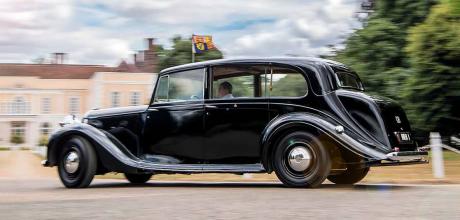1947 Daimler DE27 Hooper State Limousine
The Queen’s Daimler. Driving Her Majesty's first ever state car. This Daimler limousine was HM Queen Elizabeth Il’s first State car — back when she was still a princess. Glen Waddington tells a royal tale.
Photography Andy Morgan
FIT FOR THE QUEEN
It seems fitting that Daimler, by Royal Appointment since 1900 entitled to the legend ‘Motor Car Manufacturers to HM the King’, once made the biggest British car in production. Such was the claim in The Autocar in January 1948, though that was in a road test of the DE27, which, as the magazine admitted, was within a ‘few inches in wheelbase and overall length’ of the straight-eight-powered Daimler DE36 — which made the DE27 the second biggest British car in production at the time. If not quite fit for the King, it was perfect for Princess Elizabeth. And the 1947 DE27 you see here was Her Royal Highness’s first State limousine.
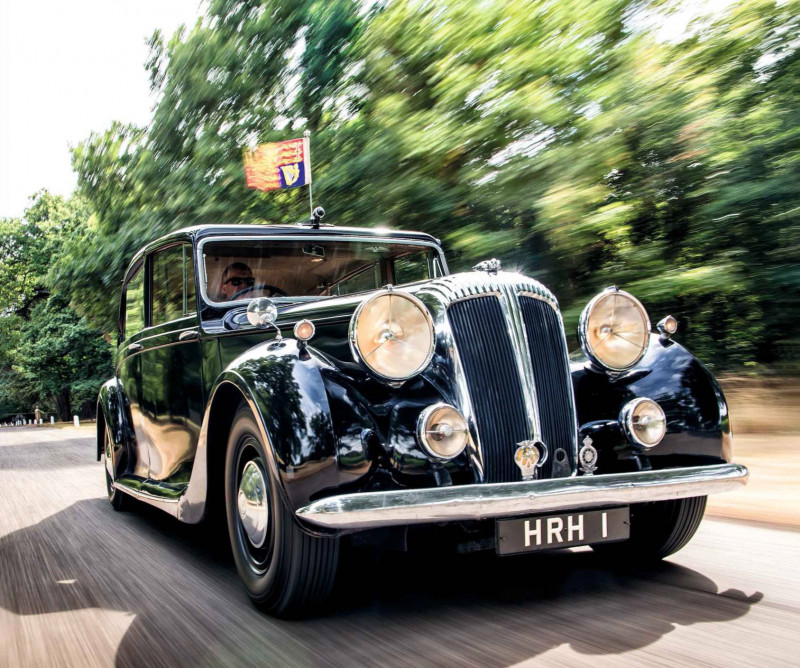
The young Princess had grown up with the Royal Daimlers not only of her father but also those of the generations above him, and in 1944, when she turned 18, he presented her with a 2 ½ -litre Daimler DB18 saloon. It wore the registration number JGY 280, which she transferred to every private car she ran thereafter. Princess Elizabeth gained a Military Provisional Driving Licence while serving in the Auxiliary Technical Service during 1945, and drove her DB18 regularly, even having it shipped to Malta when she was staying there.
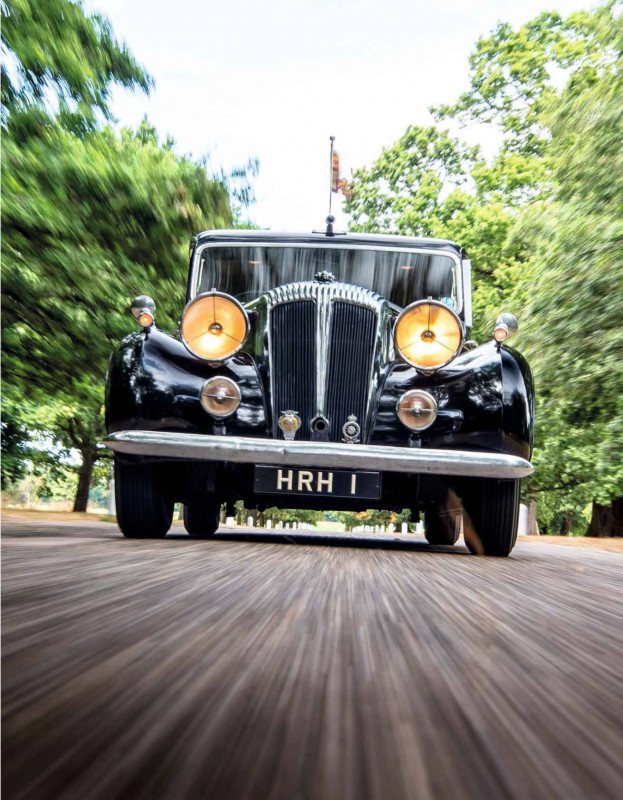
But as the Princess’s life became increasingly public, and her engagements more and more formal, so she began to attend in one of HM King George Vi’s own Lanchesters, or one of his rather special State Daimlers. And then Princess Elizabeth married Philip Mountbatten. The RAF and WAAF raised money for a wedding gift and, as listed in the official documentation, presented the couple with ‘a Steinway grand piano, and a cheque for The Princess Elizabeth’s personal use’.
So, what to do with the £4000 in question? Buckingham Palace suggested a new limousine, and Daimler happened to have a six-cylinder DE27 with the six-light Hooper body on its books: somewhere halfway between her own saloon and the King’s Straight Eights. Its chassis had been built shortly after the end of World War Two, ordered to the Hooper coachworks late in 1945 and it was road- registered for 1947 late in December 1946 as FVC 355. The Princess’s private secretary wrote to Lord Tedder, RAF Chief of Air Staff, to declare somewhat austerely: ‘The car will be of the greatest use to the Princess.’ It was registered with the HRH 1 numberplate and the Palace took delivery on 2 February 1948.
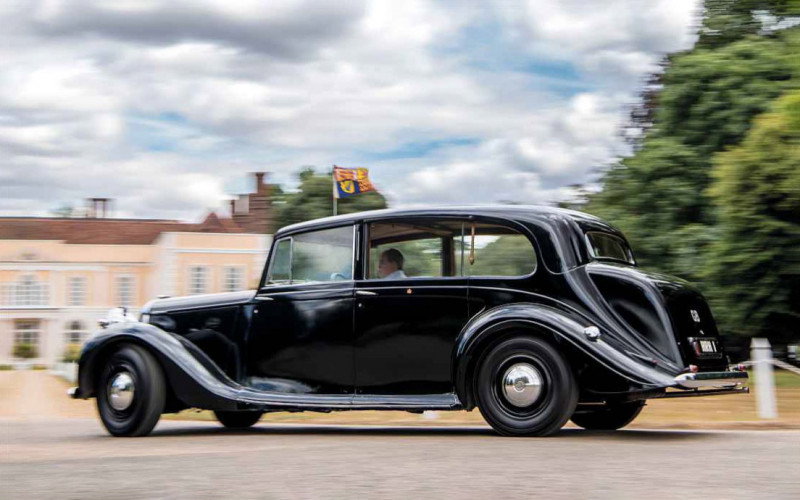
The Daimler’s six-light body goes elegantly without a rear-most door pillar, which allowed an unimpeded view out for the royal occupants — and also great visibility for onlookers during those special occasions when the young Princess and the Duke of Edinburgh were (quite literally) on display. It was finished in black, with hard-wearing dark blue leather trim for the chauffeur compartment and soft, warm, fawn West of England fabric for the suitably palatial rear quarters, with over-rugs to ensure cosy royal feet.
Keeping the two cabin areas separate was an electrically operated glass division; there were electric windows too, plus a radio in the rear and a pair of forward-facing folding seats. The royal crest was emblazoned on both rear passenger doors, while on the roof was a police lamp (this important car was granted certain traffic privileges, after all), as well as a fitting to carry the royal standard.
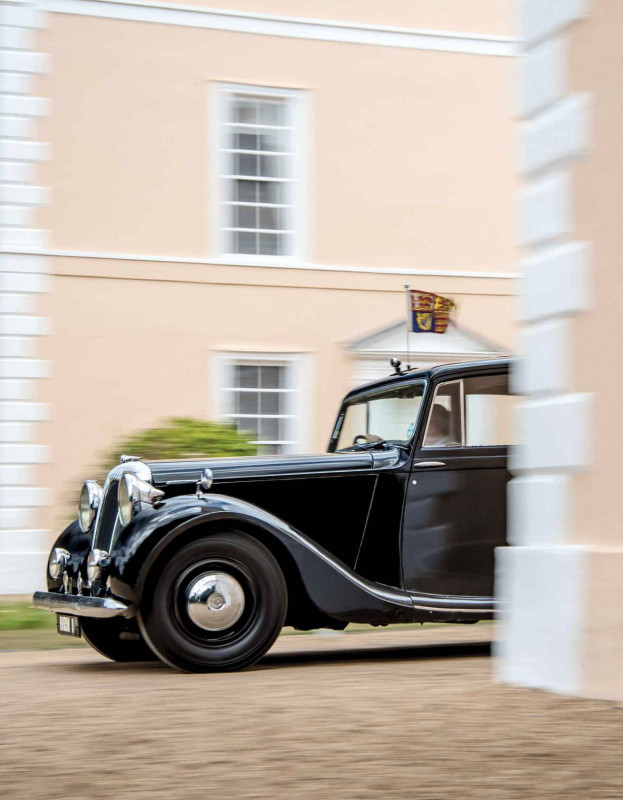
Within weeks of its arrival at the Royal Mews, the Daimler was pressed into official duty. On 23 April it collected the royal couple from St Georges Chapel at Windsor Castle, following their installation as Lady and Knight of the Order of the Garter. Then, three weeks later, the young Princess and the Duke were collected from Paris’s Gare du Nord railway station and conducted in the Daimler around the French capital on 13 May. They stopped to lay a wreath on the tomb of the unknown warrior at the Arc de Triomphe.
Not only was the Daimler put to use for public occasions, it was also employed on more jovial appointments and as the young couples family car. Notably, Prince Charles made his first journey in the Daimler on 5 January 1949. He was driven by his father the Duke of Edinburgh from Buckingham Palace to Sandringham while in the arms of Princess Elizabeth, who had joined the royal nurse in the back seats. Later that year, in November, Princess Elizabeth and her sister Princess Margaret were driven in HRH 1 to and from the Royal Command Performance at Londons Coliseum theatre.
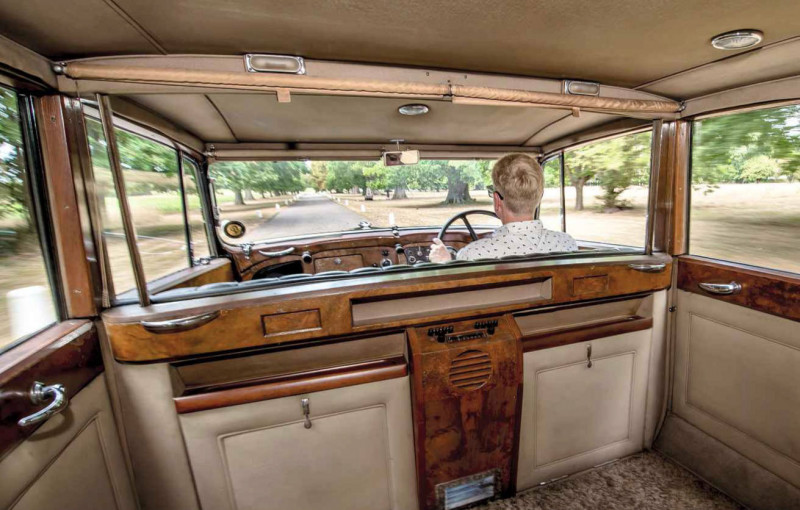
But the HRH 1 plate was soon to be transferred elsewhere, in a move that shattered the tradition of the past two generations. Rolls-Royce was going through rationalisation after World War Two and experimenting with more powerful engines in a startlingly rapid Bentley MkV prototype that had earned the epithet ‘Scalded Cat’. Word reached the Duke of Edinburgh, who was granted a test drive. He returned it, enthused by its turn of speed, and Rolls-Royce subsequently received an order for a limousine suited to ‘official’ use yet powerful enough to be enjoyed by the Duke.
That was on 15 November 1948. Rolls-Royce was keen to impress, in the knowledge that Daimler had the Royal Warrant, and the first Phantom IV (of only 18 built) was delivered in July 1950, described by Rolls- Royce as having been ‘designed to the special order of Their Royal Highnesses, the Princess Elizabeth and the Duke of Edinburgh’. It became the official state car on the occasion of Princess Elizabeths accession to the throne in 1952, repainted claret and black from its original deep green, and remains in the Royal Mews for state occasions to this day.
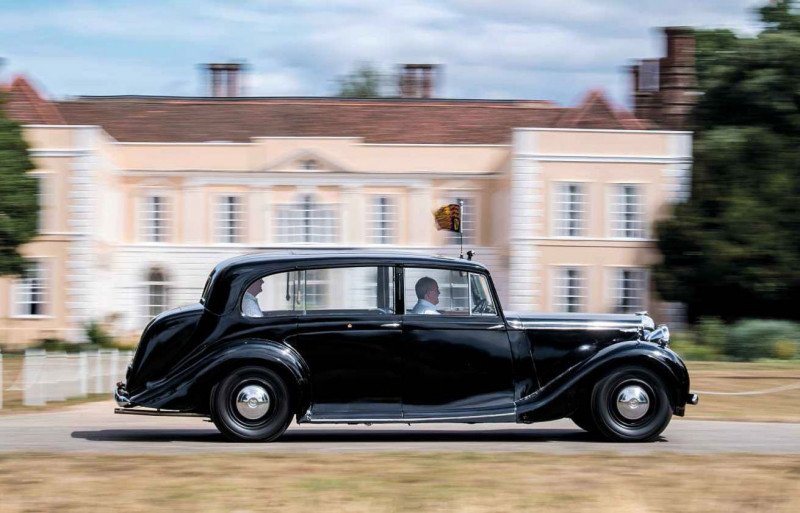
Unlike the Daimler, which is why we’re able to drive it today. It’s now in the care of James Grinter, a British auctioneer and specialist in royal ephemera who has owned the late former Princess’s limousine for a little more than a year. During that time he has made it roadworthy once more, following a 30-year layup with its previous owner and years spent in an American museum before that. It is, however, in remarkably original condition, having covered only 44,000 miles since new.
‘It was part-exchanged for the Rolls,’ says James. ‘That was via the Rolls-Royce agent The Car Mart. It was re-registered as LGY 905 and sold on to be used as transport at a care home for the elderly in London.’ It had become the property of Hammerson and Partners, which owned the home in Hampstead. They sold the car in 1965 via MET Garages of Kilburn, after which it was briefly put into use by a private hire business in Hemel Hempstead, Hertfordshire.
From there it was rescued by the Daimler enthusiast and historian Brian Smith, who had already enquired about it while it was at MET. In correspondence with James, he states that he’d discovered the car ‘in a garage with a big-end run and looking very poorly’. The owner had apparently suffered a heart attack, and his wife had been offered £5 in scrap value for the Daimler, the history of which had fallen into obscurity. And so Smith bought it for a nominal £10, towed it back to his home in Romford, Essex, and instructed Daimler specialist Masons of Edmonton to put the engine back into working order.

I then used it for some months and have pictures of two of my children being taken for rides in the car,’ he continues in his letter.
The Daimler then moved on again, to the American collector Arthur Rippey. Smith delivered the limousine to Tilbury docks and it went by container to its new home in Manitou Springs, Colorado. That was in the late 1960s. After more than two decades, the car came back to the UK, having been repatriated by a Kent-based collector. He sadly passed away at the end of 2021.
Resolutely, this limousine is no scalded cat. Let’s be clear: the Duke was never going to satisfy his inner racer behind its wheel. But that needn’t mean that this huge car lacks enthusiast charm, even if its proportions — 213.5in in length, on a wheelbase of 138in, second only to the DE36 at 222in and 147in — hardly suggest sports car nimbleness. And now it’s my turn to sit behind that same broad Bakelite rim and on that very same leather.
There’s no power-assistance, of course, so the steering is heavy, especially as you pull away. In other ways, though, the Daimler does its best to help, not least in that there’s a very solid 190lb ft of torque and it peaks at just 1200rpm. But you’re not juggling clutch and throttle to ease from rest; instead, Daimler boasts about its ‘fluid transmission, basically a Wilson-type pre-selector system with a fluid flywheel.
There’s a quadrant off the steering column, giving access to four forward speeds plus reverse. It’s suggested that first is only for manoeuvring, so select second and engage it with your left foot. Gain speed gradually but indomitably, select third on the quadrant, then effect the shift with the left pedal when you’re ready, backing off the throttle as you do so.
There is little in the way of road rumble and the weight of the car and the relatively sophisticated suspension smother surface bumps (even the live rear axle is unusually well- located and de-coupled), while the engine’s vocal efforts subside to a breathy background hum. It’s surprisingly satisfying to drive and, given the era of the car, impressively refined.
Talking about the era, and remembering the tone of Princess Elizabeth’s private secretary, The Autocar road test puts it best. ‘Probably even today, after the Daimler firm have been making for many years overhead valve-engined cars of high performance characteristics, there are people who are not aware that they have departed as far as this model indicates from the days of long ago when smoothness and silence were the chief aims of the sleeve-valve- engined Daimler and performance as such was not achieved. The latest designs, of which the Twenty-seven is an excellent postwar representative, combine the traditional Daimler silkiness and silence with performance to satisfy most requirements.’ Except, perhaps, the Duke of Edinburgh’s. Yet while the DE27 undoubtedly lives up to Daimler’s brochure statement of ‘Infallible in performance. Impeccable in appearance’, he might well have been more impressed by its senior sibling.
HM King George VI certainly was. The entire royal family had decamped to South Africa in 1947, where they were graciously conveyed by a fleet of 5.5-litre straight-eight- powered DE36 limousines and landaulets. The King immediately placed an order for two Straight-Eight Hooper Landaulets, which were delivered on his return to Buckingham Palace. The Daimlers’ upright style and patrician air might have left the Duke of Edinburgh nonplussed, but these cars were both more imposing and more expensive than anything Rolls-Royce had ever produced.
The DE36 was the last British straight-eight offered for sale and 216 had been built when production ended in 1953. As well as to the British royal family, Daimler sold DE36s to the royalty of Afghanistan, Ethiopia, Monaco, the Netherlands, Saudi Arabia and Thailand. Production of the short-wheelbase DE27 ended in 1951, after 205 had been built, plus a further 50 DH27s especially for hire. More than 500 were also built with somewhat ungainly ambulance bodies, up to 1964.
Any patients thus carried would have been disturbed only to the smallest possible degree by the outside world, if a stint in the posh seats of the royal DE27 is anything to go by. I’d already noted the sofa-style lounging aft of the driving compartment and it’s even more refined here, especially with the divider raised, which makes any mechanical murmurings more distant still. The ride feels different, as you’re above the driven axle, but vertical movements are minimal and the impression is very much one of wafting across the tarmac rather than being involved with it.
Such an air of reserve seems entirely appropriate, of course. While HM Queen Elizabeth II carried out so many of her official duties from the products of Rolls-Royce and, since her Golden Jubilee in 2002, two identical, specially commissioned Bentleys, it’s important to remember that, back when she was a princess, a Daimler was considered to be above either of those. Fit for the Queen, indeed.
‘It’s surprisingly satisfying to drive and, given the era of the car, impressively refined’
Below — Column-mounted ‘pre-selector’ quadrant controls the Daimler's fluid-coupled four-speed transmission; RAC badge seems entirely appropriate; 4.0-litre straight-six is stoic.


Opposite page, and above It's not fast, but even the chauffeur will find the Daimler satisfying; VIP rear quarters are cosseting and spacious.
Top and above RAF officers deliver their gift to Buckingham Palace; leather bench occasionally supported the Duke of Edinburgh.
Within weeks of its arrival at the Royal Mews, the Daimler was pressed into official duty’
TECHNICAL DATA 1947 Daimler DE27 Hooper State Limousine
- Engine 4095cc OHV straight-six, twin SU carburettors
- Max Power 110bhp @ 3600rpm
- Max Torque 190lb ft @ 1200rpm
- Transmission Wilson-type four-speed pre-selector, rear-wheel drive
- Steering Maries worm-and-roller
- Suspension Front: double wishbones, coil springs, Luvax-Girling hydraulic dampers, anti-roll bar. Rear: live axle, semi- elliptic leaf springs, Luvax-Girling hydraulic dampers, anti-roll bar
- Brakes Servo-assisted Girling hydro-mechanical drums
- Weight 2641kg
- Top speed 81mph
- Acceleration 0-60mph 27sec


